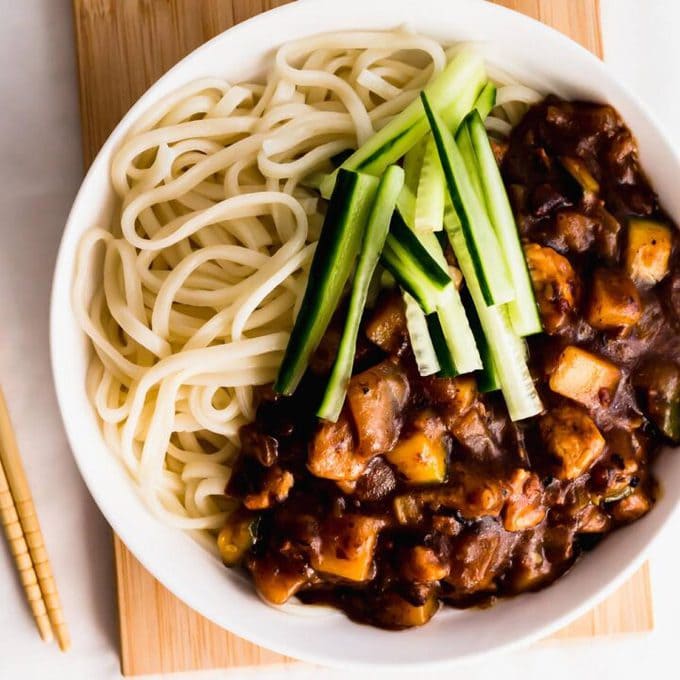
Jajangmyeon (Korean: 자장면) is a popular noodle dish originating and consumed mostly in South Korea. It is best known for its flavor and the rich sauce it is prepared with.
These are noodles served with a thick sauce of black bean paste, meat, and vegetables. The name “jajang” comes from the black bean paste (chunjang), while “myeon” means noodles in Korean. The sauce has a salty, umami flavor that has become a favorite in South Korean street food and restaurants.
The dish has its roots in Chinese cuisine, specifically “zhajiangmian” (炸酱面), which is the Chinese version of black bean sauce pasta. The adaptation of this dish in South Korea dates back to the first half of the 20th century, when Chinese immigrants introduced the dish to the country. Over time, it was adapted to suit Korean tastes, resulting in the modern version of jajangmyeon that we know today.
Jajangmyeon is usually served in a large bowl, with a generous amount of black bean sauce poured over the noodles. It can be accompanied with kimchi and sometimes pickled onions.
To eat it, chopsticks are used to pick up the noodles and sauce. It is common to mix the noodles well with the sauce before eating to ensure that each bite is well coated. Some may add a little soy sauce or vinegar to adjust the taste to their preference.
In South Korea, jajangmyeon is a celebratory dish on special occasions, such as Jajangmyeon Day (April 5), and is considered a quick, comforting meal. Additionally, there are regional variations and adaptations that may include different ingredients, such as seafood or tofu.

How to make jajangmyeon at home

Source: https://reporteasia.com/cultura/cocina-asiatica/2024/08/24/jajangmyeon-fideos-salsa-umami-frijol-negro/


